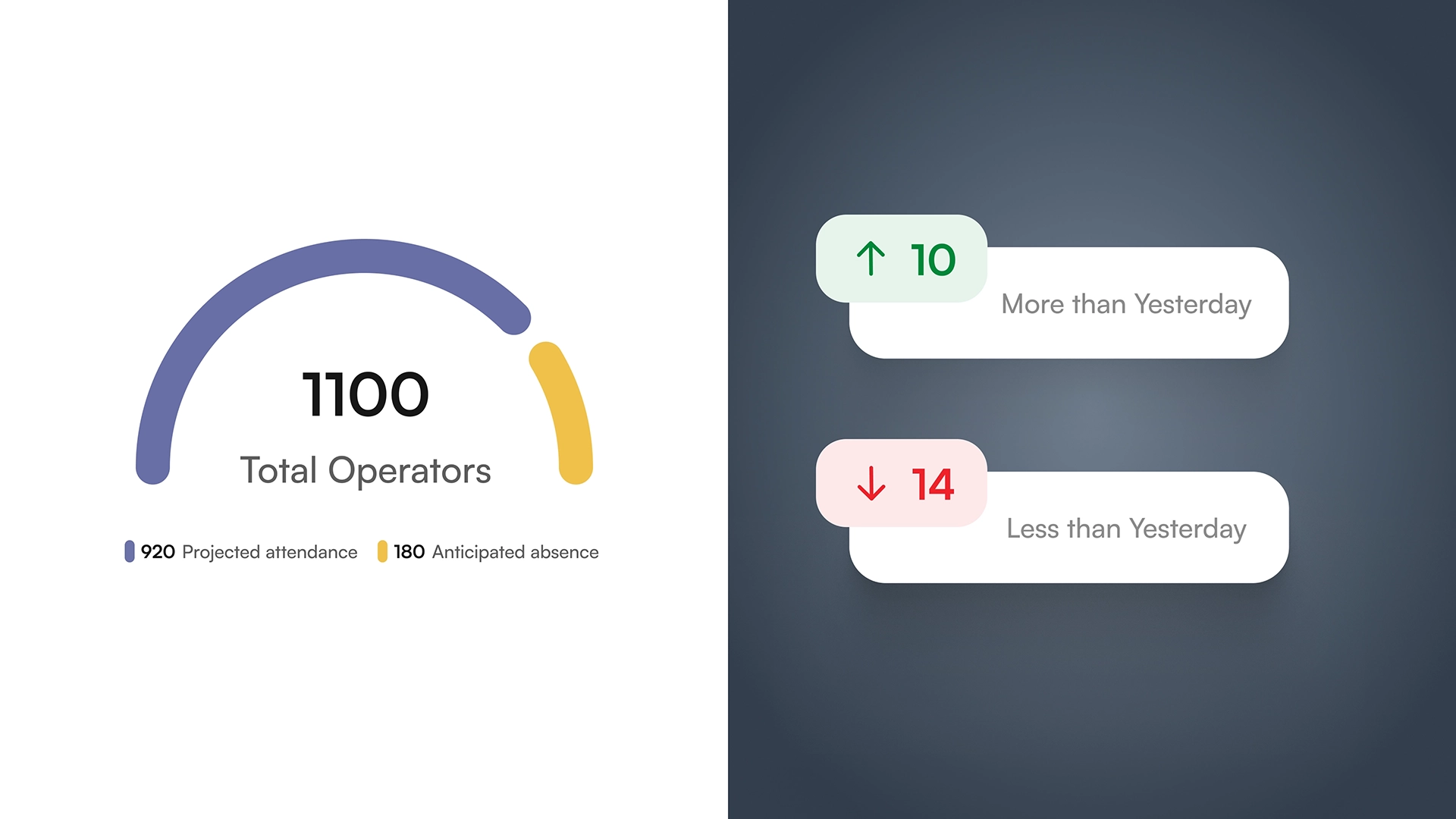A smart fabric balancer.
The brief.
The objective was to develop a smart tool to dynamically balance production lines using real-time data on Work-In-Progress (WIP) and downtime. The tool also supports line managers by generating daily manning sheets that account for actual average operator capacity factoring in downtime, and by identifying skill surpluses or shortages to enable more efficient workforce allocation.
Our approach.
Designing the tool meant getting a real grasp of what happens on the shop floor. We found that line managers struggled with balancing lines because WIP and downtime changed constantly. Manning decisions were often based on guesswork, and there was little visibility into how well skills matched across lines. To fix this, we built a tool that pulls data from WIP tracking, downtime logs, and operator performance to give live, data-based recommendations for line balancing. It also generates daily manning sheets that reflect true operator capacity and flag skill gaps, helping managers make smarter decisions and improve overall efficiency.
The outcome.
We built the app around the daily needs of production managers and supervisors. The interface makes it easy to see and act on key data like WIP levels, operator efficiency, and downtime. Complex metrics are shown clearly, with real-time insights that help with line balancing and planning. The design is clean and straightforward, making it simple to use and helping teams make faster, better decisions on the floor.
Dynamic allocation of daily production
The system automatically rebalances production lines and creates updated line allocation sheets twice a day. It analyzes live data on WIP, downtime, and absenteeism to spot bottlenecks early and shift resources where they’re needed to keep operations running efficiently.
Actionable and meaningful insights
Proactively identifying bottlenecks and reallocating resources to ensure optimal efficiency involves analyzing real-time constraints, such as underutilized operators, or absent workers.
Absenteeism prediction
The system predicts skill requirements by analyzing historical absenteeism data and local calendar festivals, enabling proactive identification and management of potential skill shortages.
Dynamic allocation of daily production
An AI-powered system generates monthly manning sheets by analyzing average operator capacity and identifying skill gaps or surpluses, forecasting line requirements for each style up to 60 days before production
Design language shown in this Case Study has been updated from the initial production design.





